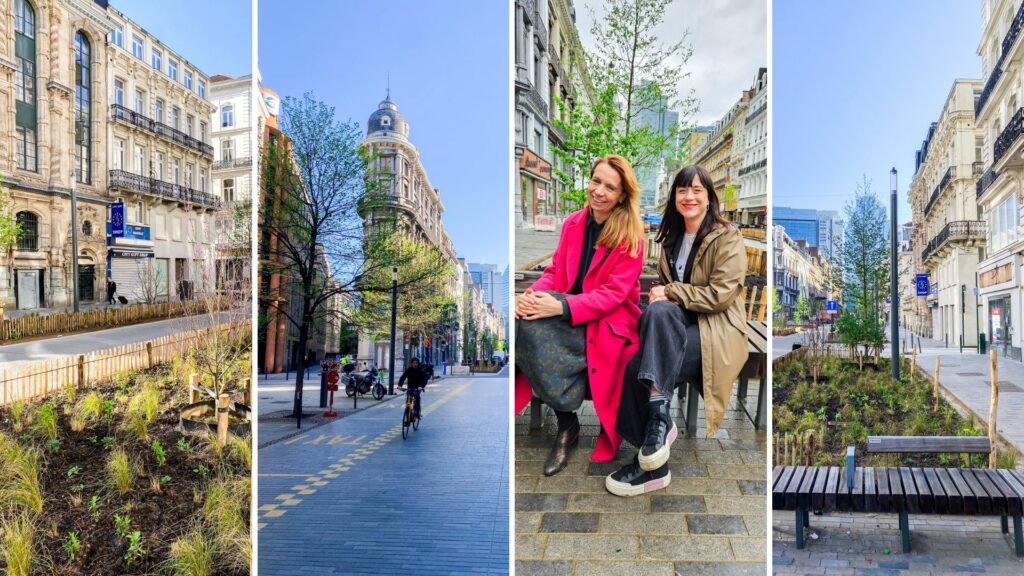Continuing the success of Brussels' pedestrian zone, the redesigned Boulevard Adolphe Max in the city centre and its side streets are being inaugurated on Saturday.
About a year after the start of the works, Boulevard Adolphe Max and its side streets (Rue de la Fiancée, Rue du Finistère, Rue du Pont-Neuf, Rue Saint-Pierre and Rue de Malines) look completely new: 16,000 m² of public space has been made future-proof: more nature, less mineral.
"Yet another avenue we are transforming from a grey highway to a lively boulevard with plenty of space for pedestrians and cyclists, trees and terraces," said Brussels State Secretary for Urbanism Ans Persoons on social media, inviting everyone to come to the official inauguration.
Dating back to the '70s
The first layout of the Boulevard Adolphe Max dates from 1976, after the construction of the underground tram lines. Over the years, however, the condition of the road surface and pavements deteriorated; the structure of the avenue was not adapted to the one-way car traffic that passes through it today.
In the 1970s, trees in overhead bins were chosen, something the authorities try to avoid today because it means that the trees were never able to grow properly as their root space was too limited. Almost all of them were in poor health and risked losing branches or falling over.
The narrow streets between Avenue Emile Jacqmain and Avenue Adolphe Max also date from 1976. With their narrow pavements (which are less than 1.5 m broad), these road profiles no longer conform to current standards. The streets faced several problems: illegal parking that prevented pedestrians from passing through, damaged road surfaces, a lack of social control and hygiene problems.
With this reconstruction, the City of Brussels wants to give Boulevard Adolphe Max back its former glory. It was reconstructed from façade to façade on one level, and the style of the street furniture of the pedestrian zone – street lighting, benches and bicycle racks – was continued.
New trees, green areas and wide pavements in blue stone were placed. The blue stone from the pavement is a 100% Belgian product, extracted and manufactured in Belgium. Across the entire area, a total of 36 tall-stemmed trees, 23 smaller multi-stemmed trees, 57 green zones, 87 bicycle racks, eight benches and five lounge benches are being installed.
Related News
- How Anspach remade Brussels
- 'Basic physiological needs': Brussels must create more public toilets, study argues
- More space for pedestrians on Brussels' Boulevard Adolphe Max
In the future, rainwater on the pavements and part of the roofs will also be collected on site and serve to feed the green zones/trees. The permeable area increases by 1400m² compared to today.
Now, with the return of sunny days and this shopping street ready to welcome visitors with open arms, the authorities gave the inauguration a "Flying and spinning" theme: fanfares, kite designing, stilt walking and exhibitions are on the programme on Saturday afternoon.

